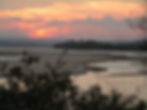

CONTEXT:
The Julius Nyerere dam is currently under construction on the Rufiji River in Tanzania, the country’s largest river. Until recently referred to as Stiegler’s Gorge before being rebranded in homage to the country’s founder, the dam would become Africa’s second-largest hydropower dam by installed capacity—claimed to be 2115 MW—behind only the Grand Ethiopian Renaissance Dam on the Nile.
The dam is being built in the middle of the Selous Game Reserve, a UNESCO World Heritage site recognized for its outstanding biodiversity value, which serves as home to significant populations of many of Africa’s most iconic species. With the dam’s reservoir projected to be the sixth-largest in Africa, it would severely disrupt the site’s outstanding ecological value and biodiversity, including several endangered species such as the black rhinoceros. It would also jeopardize the Rufiji Delta, an important Ramsar site, as well as the livelihoods of 200,000 people living downstream of the dam.
PROJECT IMPACTS:
The Nyerere dam would create a vast reservoir—at 1200km² it would be among Africa’s largest—above Stiegler’s Gorge that would drastically change the landscape, blocking migration routes for both iconic African fauna and fish species. The impacts downstream would, if anything, be even more severe, blunting the seasonal floods that sustain one of the world’s greatest sites for diversity along the 180km stretch to the coast, including a delta that’s also a renowned Ramsar site.
IMPACTS ON THE SELOUS GAME RESERVE
The Selous Game Reserve is considered one of Africa’s most important protected areas because of the rich biodiversity that it harbors. It is also among the largest UNESCO World Heritage sites, having been inscribed in 1982 in recognition of the outstanding universal value of the wildlife it contains. The dam would be sited near the center of the reserve.
IMPACTS ON FRESHWATER SPECIES
The dam itself would be an obstacle for migratory fish species that travel upstream, including to Kilombero River, a tributary which accounts for 60% of the Rufiji’s flow and is itself host to a Ramsar protected site. Impacts on migratory fish may result in potentially significant impacts on the livelihoods of thousands of people dependent on fisheries in the upstream catchment. The dam would both withhold considerable amounts of sediment and disrupt the natural flood pulses that sustain freshwater and other species downstream.
Biodiversity Snapshot
The dam would impact the habitats of some of the most iconic and charismatic African wildlife, including hippopotamuses, elephants, cheetahs, lions, giraffes, and the critically endangered black rhinoceros. The dam would be built in the middle of one of Africa’s largest wildlife parks, whose diverse habitats of grasslands to tropical forests host rich biodiversity.
Selous Game Reserve
A key sanctuary for African wildlife
The vast Selous Game Reserve in southern Tanzania, roughly the size of Switzerland, serves as home to a high variety of habitats from forests to wetlands, and from woodlands to grassland. This variety is what makes the reserve so rich biologically. Its annual transition from dry to rainy season is marked by the picturesque sand rivers that occur when riverbeds that have lain dry for months receive torrents of rain.
The reserve was once home to large and thriving populations of African elephants and the critically endangered black rhinoceros, but decades of unchecked poaching caused their populations to dwindle, a trend that has only recently begun to reverse. Conservationists fear that construction of the dam in the middle of the reserve, as well as other planned developments, would be a major setback after recent success in animal populations rebounding.


AT-RISK SPECIES PROFILE
PROJECT IMPACTS
LESSONS

JULIUS NYERERE
Tanzania
Dam would flood UNESCO World Heritage Site home to incredible biodiversity
Endangerd black rhinoceros whose habitat is threatened by dam construction
Image by Danny See Chuan Seng.
Rufiji River in Selous Game Reserve
Image by Panii, CC.
Lion whose habitat is impacted by dam construction
Image by Etienne Steenkamp.

Biodiversity Snapshot
The dam would impact the habitats of some of the most iconic and charismatic African wildlife, including hippopotamuses, elephants, cheetahs, lions, giraffes, and the critically endangered black rhinoceros. The dam would be built in the middle of one of Africa’s largest wildlife parks, whose diverse habitats of grasslands to tropical forests host rich biodiversity.


Company: Power China
Subsidiary: Sinohydro

Impact Category
Protected Area

Impact Category
Biodiversity Hotspot

Impact Category
Free-flowing River
CAPACITY
2115 MW
COST
$3.6 billion
STATUS
Under Construction
Local Community Impact
200,000 people's livelihoods downstream will be impacted.

1.
PowerChina should abide by UNESCO World Heritage Committee’s call for the prohibition on construction of dams within World Heritage sites.
2.
PowerChina should withdraw its involvement due to the dam’s impacts on multiple important protected areas and the sustained local and global public outcry over these impacts.

